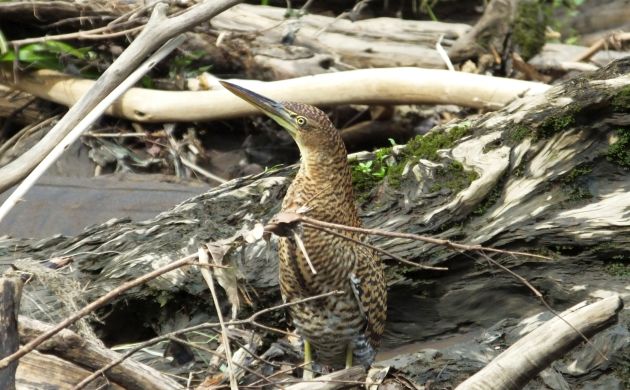
As with peninsulas and places situated on an isthmus, Costa Rica has more than one coast. In the west, the Pacific splashes against beaches, estuaries, and occasional rocky spots backed by dry forest that transitions into rainforest as we head to the south. Over on the other side of the mountains, the rivers and streams rush their way down slope to eventually get muddy and meander their way to the Atlantic. Since that part of the Atlantic belongs to the Caribbean Sea, locally, the eastern low elevations of Costa Rica are also referred to as the “Caribbean lowlands”. However, other than some communities made up of people of Jamaican heritage, there’s actually not much Caribbean about it. White-crowned Pigeon might be on the list, but that rare prize for Costa Rica is far from regular. Birds with white on them are much more likely to take the form of goodies like the Snowy Cotinga, or two species of tityras. In Costa Rica, even the super shy Slaty-backed Forest-Falcon is seen more often than the island pigeon with the snow-white cap.
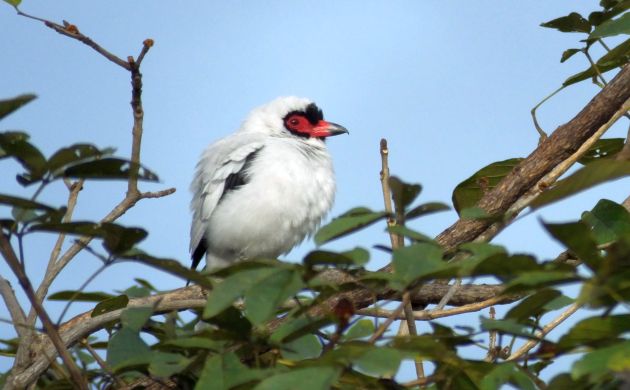
Masked Tityra– the most frequently encountered small bird in Costa Rica with white plumage.
The Caribbean slope of Costa Rica also differs from the islands in having a lot more bird species. The lowland forests of this region are actually the most avian-rich part of the country and host around 400 some species. Although a lot of beautiful rainforest was replaced by bananas, cattle pasture, and other ag-lands many years ago, at least we can still enjoy great birding at a number of sites, most of which are easily accessible including Sarapiqui, the most visited site in the lowlands north of San Jose. This is where we find the La Selva Biological Station, Selva Verde, Tirimbina Reserve, and several options for lodging. Given the ease of access (except La Selva, a site only accessible by paying a fair bit to stay there or take a guided walk), it’s kind of odd that the Birding Club of Costa Rica doesn’t visit more often. To make up for our collective absence, we did a trip there last weekend. As with most of the club excursions, I was the guide and the weekend involved a mix of tropical birds, good food, and good company at a local lodge that treated us well. On this occasion, the accommodation in question was Ara Ambigua Lodge, and after staying there, I am happy to say that it acts as a good base for this bird-rich zone.
Owned and run by a local family, they treated us very well, even making sure that we had coffee by 4:30 in the morning. The food was healthy, substantial, and delicious, rooms were comfortable and air conditioned, the hotel strives to be as sustainable as possible, paths between the many rooms were well lit, there are frog ponds with Red-eyed Tree-Frogs and other species just outside the restaurant, and the hotel is a quick drive to La Selva, Dave and Dave’s Nature Pavilion, and around a two hours drive from the San Jose area. I recommend staying there but what about the birds?
Although the hotel isn’t situated in an extensive area of forest (very few places in Costa Rica are), it nevertheless works well for good edge and garden birding and the patch of rainforest behind the hotel could hold some surprises. When used in conjunction with visits to Tirimbina, La Selva, and other sites in the area, a three or four day trip should result in a healthy bird list. On our first morning, we actually ended up with over 90 species in a couple of hours right around the rooms of the hotel, best ones being Green Ibis (common at the hotel ponds), Bat Falcon, Cinnamon and Rufous-winged Woodpeckers, Fasciated Antshrike, Plain-colored Tanager, Crimson-collared Tanager, and Black-headed Tody-Flycatcher.
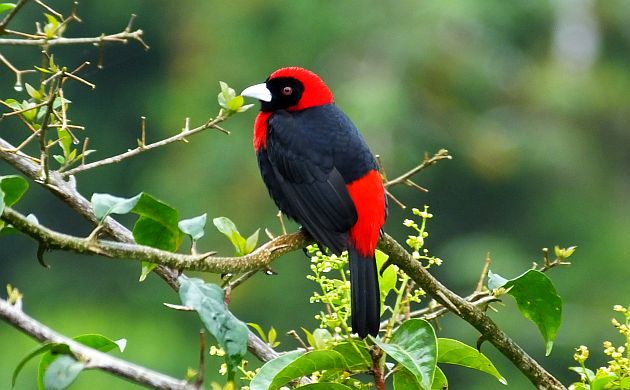
Crimson-collared Tanager- it can be a challenge to stop looking at this one.
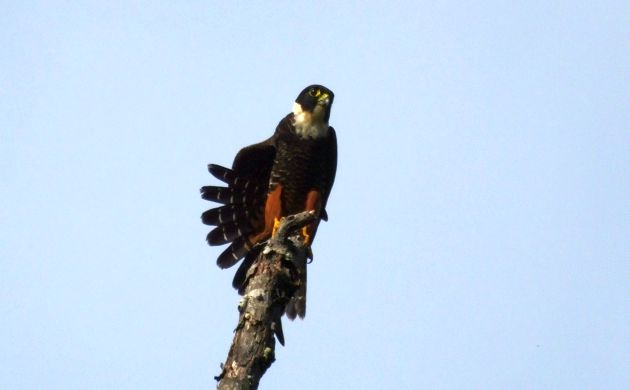
The Bat Falcon that joined us for breakfast.
Outside of the hotel, Dave and Dave’s treated us to close views of Golden-hooded Tanager, Red-throated Ant-Tanager, and some other birds seen from the shaded comfort of a veranda.
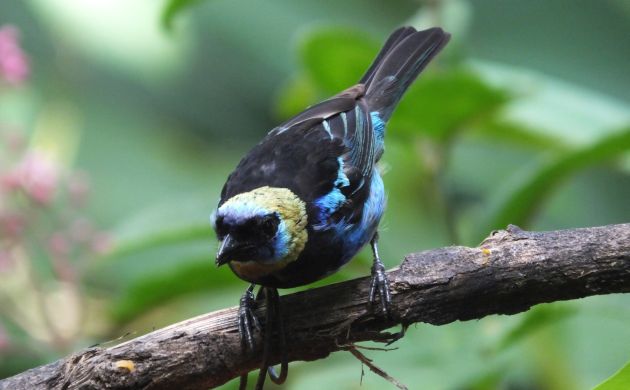
Golden-hooded Tanager- beautiful and common in Costa Rica.
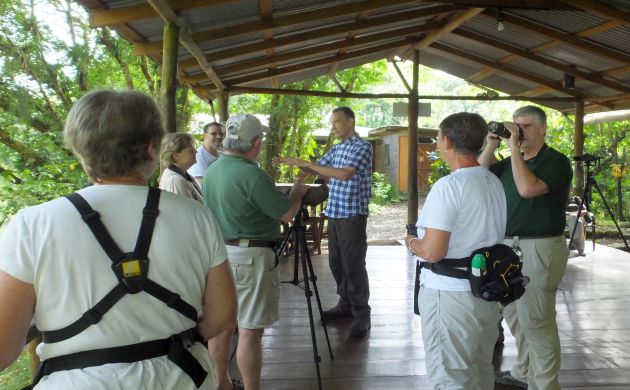
The elder Dave telling us about their reforestation tours and the Great Green Macaws that have visited one of the trees they have planted.
That afternoon, a trip to the Pueblo Nuevo area brought us to a marsh next to primary rainforest. Despite part of it being chomped by cattle, we still managed a juvenile Rufescent Tiger-Heron, an excellent find for Costa Rica! Parrots also flew overhead and the nearby forest gave us a few more tanager species, a glimpse of a Slaty-breasted Tinamou, and prolonged views of a tiny, prized Pied Puffbird.
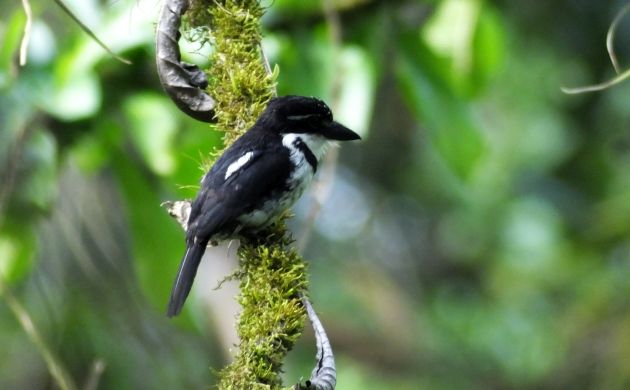
The Pied Puffbird is regular in this part of Costa Rica.
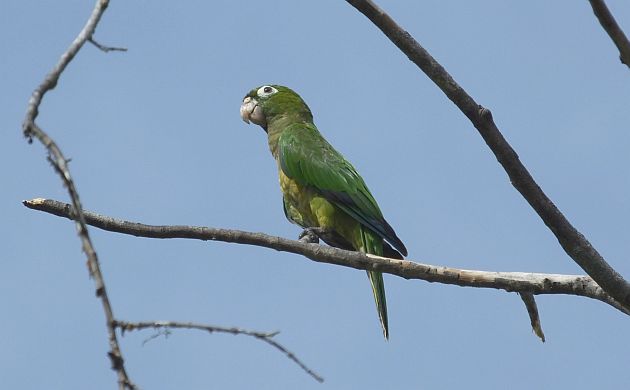
We also had close looks at Olive-throated Parakeet.
On Sunday morning, after another fine dawn of woodcreeper calls, toucan glides, and tanagers, we took a boat ride on the Sarapiqui River. Boat rides for birding can be a gamble because you often end up seeing the same species as your last time on the river, there tends to be a lot of looking without seeing much, and if the boat driver isn’t used to birders, he will probably turn the boat around for monkeys and caimans instead of birds. That said, since a boat trip in the right place can also turn up Sungrebe, Sunbittern, Green Ibis, rare raptors, cotingas, and other cool species, it’s always tempting to play the boat ride gamble. As for the trip on the Sarapiqui, the boat ride is actually worth it because the odds are in your favor for finding something “good”, and the driver knows which birds to look for. On Sunday, although we didn’t see too much (maybe because we went out after the peak of avian activity), we still had excellent close looks at Green Ibis and Bare-throated Tiger-Heron as we quietly motored through part of the La Selva Reserve. I think that ride in particular is worth it, especially if you can head out early or in the late afternoon because you might also see Great Potoo, Snowy Cotinga, and Semiplumbeous Hawk.
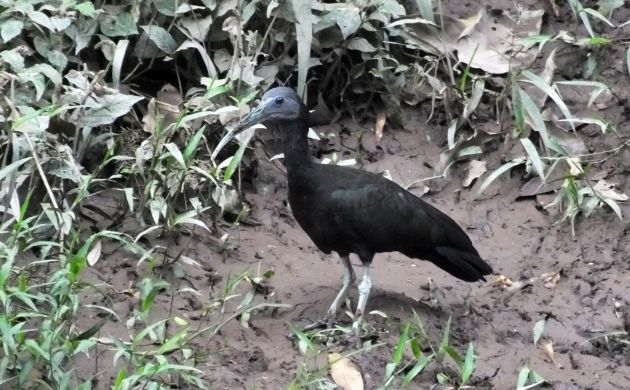
Take the boat for good looks at Green Ibis!
Whether you take the boat or not, visit Sarapiqui, Costa Rica and you are going to see a lot of birds. Have fun, it’s closer than you think!
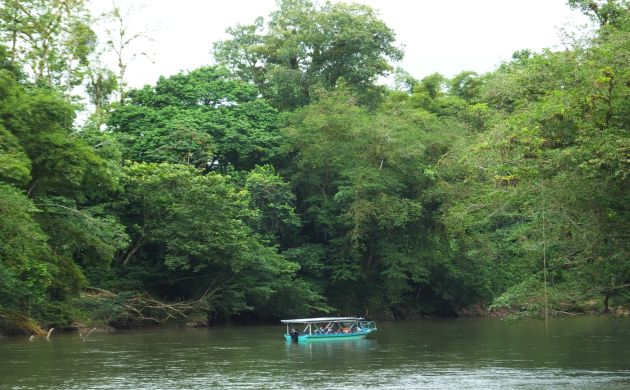











Leave a Comment